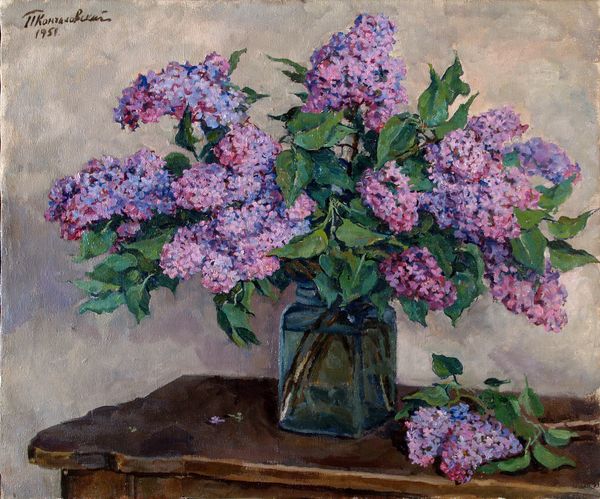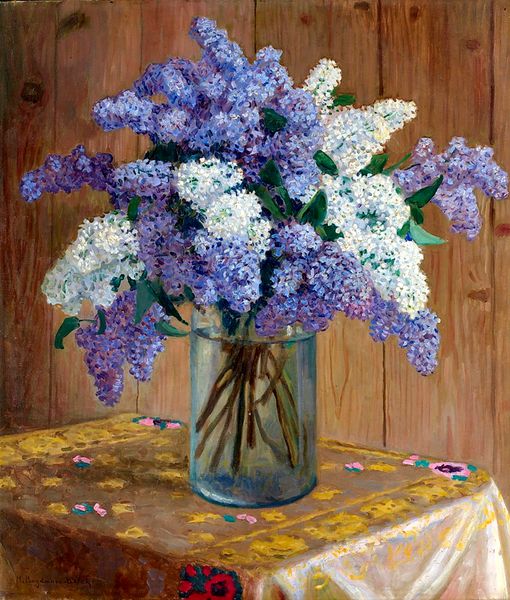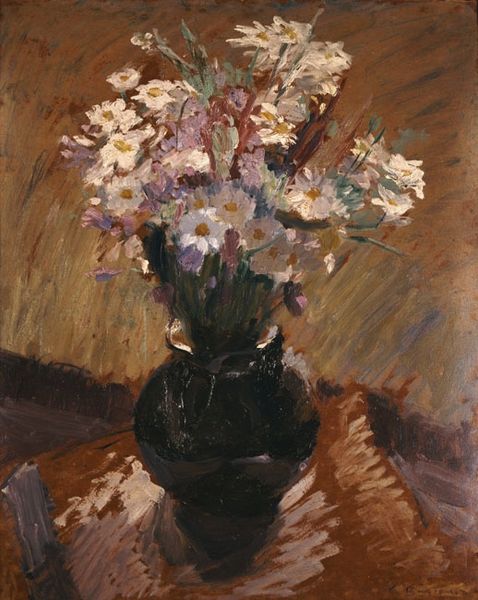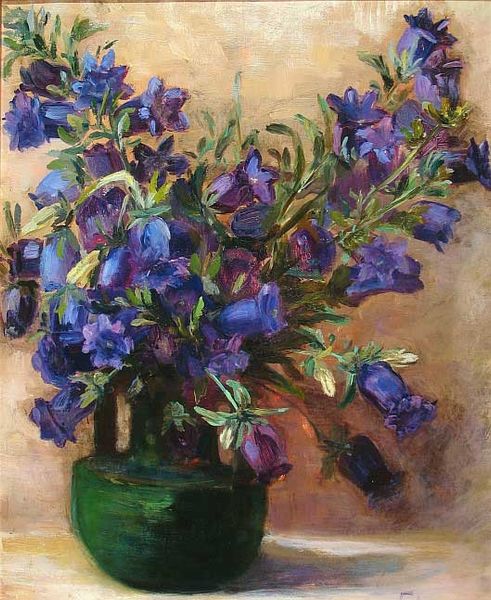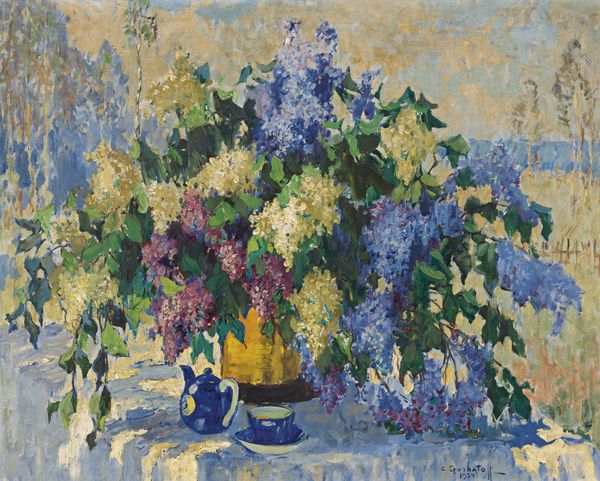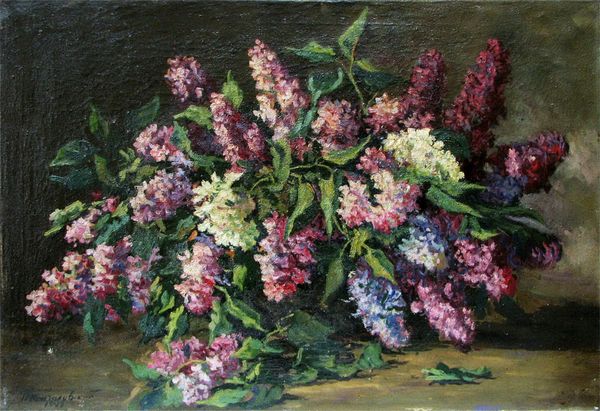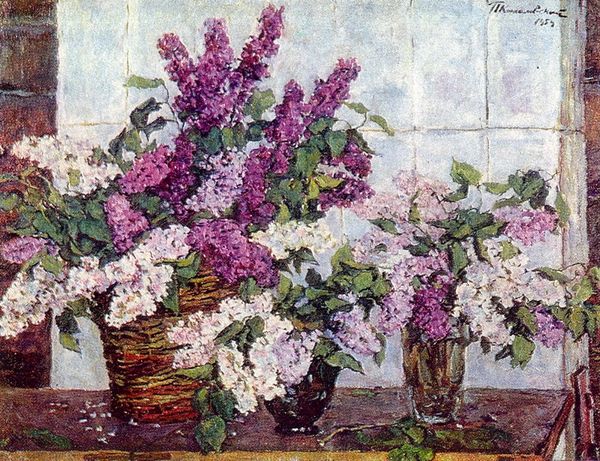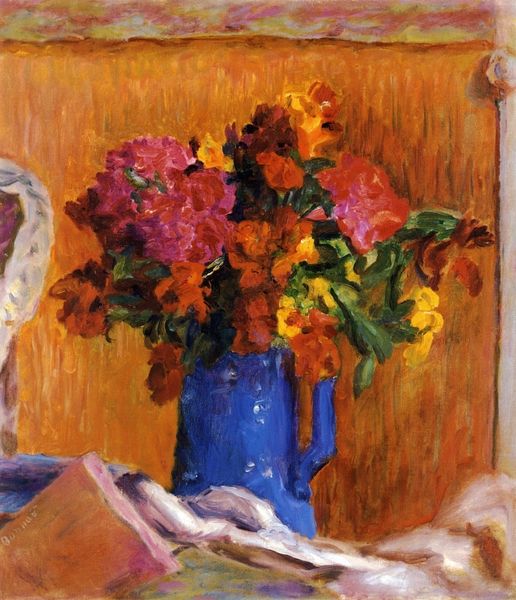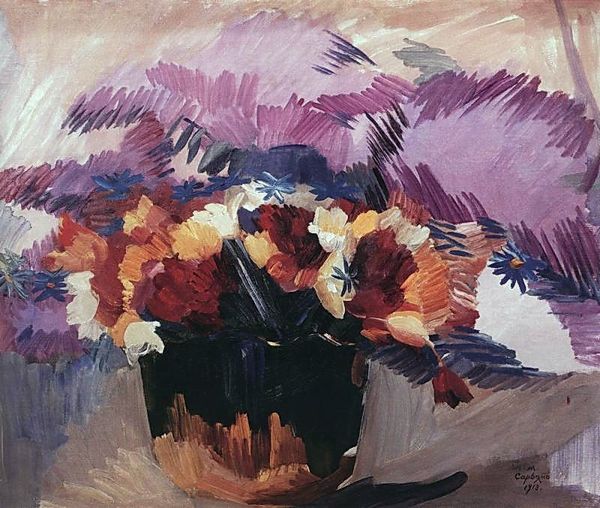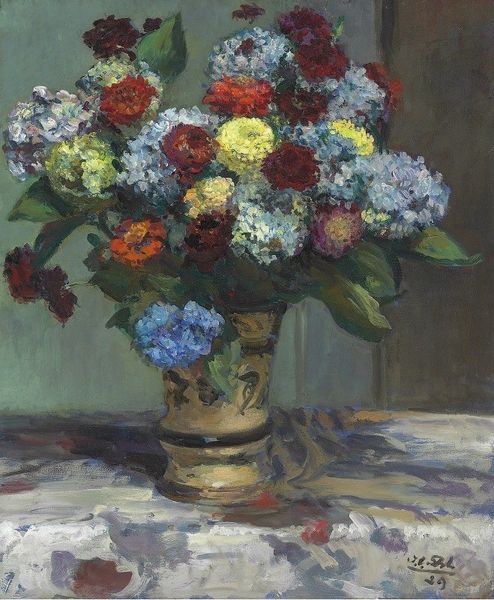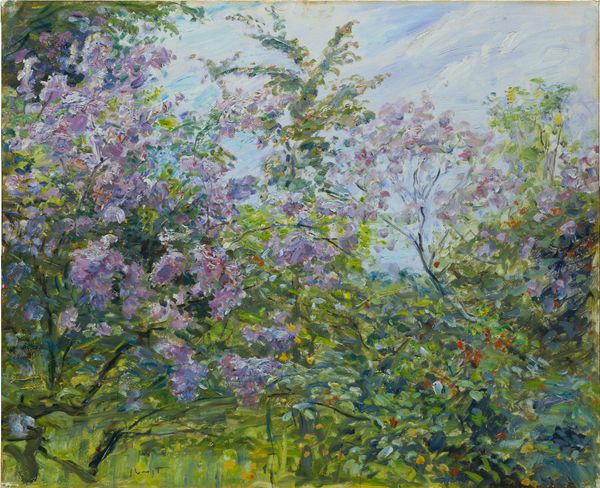
oil-paint
#
portrait
#
impressionism
#
oil-paint
#
oil painting
Dimensions: 50.8 x 61.6 cm
Copyright: Public domain
Curator: Right, let’s dive in. Here we have Mary Cassatt’s "Lilacs in a Window," dating back to 1880. The work is executed in oil paint. Editor: Oh, it feels almost dreamlike. That vibrant lavender hue dominates, yet the way she handles the light—it's like you can almost smell the lilacs. Curator: What strikes me is her exploration of materiality here. Note how Cassatt uses the visible brushstrokes, particularly the density of pigment, to build the forms. The texture almost contradicts the ephemerality of the floral subject. The means of production become part of the message, no? Editor: Absolutely. I'm also thinking about the space itself – a window, a threshold. What does it mean for Cassatt, as a woman artist within the societal structures of the late 19th century, to depict this view from inside? There’s a sense of both containment and observation at play. Her position is integral to how we see this moment. Curator: It’s intriguing. Did Cassatt chose lilacs deliberately, given their associations with first love and renewal, themes pertinent in discussions about femininity at that time? And the window acts almost as a proscenium arch, drawing our focus. The physical making mirrors that intellectual process, wouldn't you agree? Editor: Indeed. I think it’s impossible to separate Cassatt's subject matter—domestic scenes, mothers and children, in this case, lilacs in a domestic space—from the realities and restrictions placed on women's creative work during the late 1800s. This becomes a way to talk about women and creativity. Curator: Yes! To add to that, considering that Cassatt aligned herself with Impressionism, challenging accepted notions of what “high art” was and should look like by elevating everyday life and materials—it’s so interesting. Editor: Precisely. She uses a conventionally beautiful subject and scene, but imbues it with social and personal meaning, a narrative only visible through understanding of that position. This intimate space prompts a necessary dialogue around who is allowed to occupy, represent, and interpret such environments. Curator: Well, I see Cassatt highlighting her conscious choice to build form through carefully selected, material choices. Editor: And I read this choice of perspective as deliberately positioning female experience as an equal subject within modern art, and demanding the freedom of movement beyond restrictive societal conventions. Curator: Both perspectives, I think, contribute to a much deeper appreciation. Editor: Absolutely. This seemingly simple arrangement gives rise to endless interpretations.
Comments
No comments
Be the first to comment and join the conversation on the ultimate creative platform.
